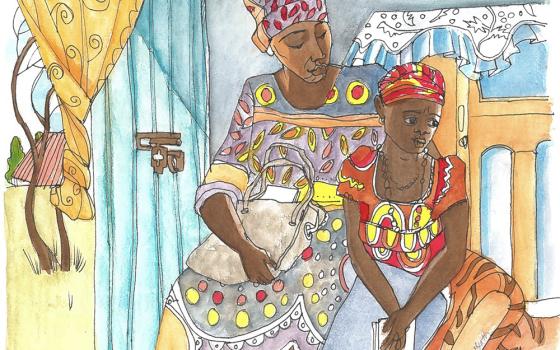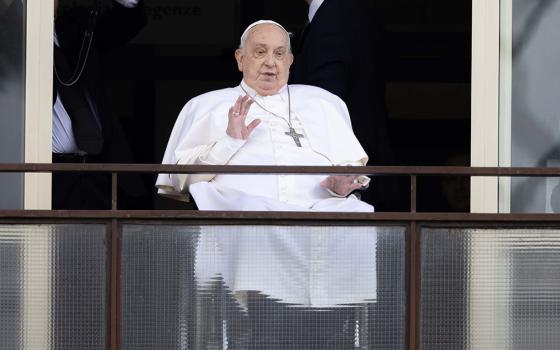Despite the ennui of too much time in airports and hotel rooms, I usually try to accept whenever I'm invited to give a talk someplace. That's partly because I get paid, but there's also a less mercenary motive. Like a stand-up comic, I've learned that there's simply no substitute for a live audience. It hard-wires me into what real people are thinking -- what stirs their curiosity, what their hopes and fears are, what leaves them cold or makes their blood boil.
(By the way, hitting the road is really the only way to gauge that, as opposed to trawling through the blogosphere. At least in my experience, blogs call to mind what Homer Simpson once said about who watches cable access TV at three in the morning: "Alcoholics, the unemployed, angry loners …" The vox populi, in other words, it ain't.)
The value of road-testing material was confirmed for me last Saturday in Dallas, when I found myself swarmed by a gaggle of young Catholics eager to confirm a key insight about their generation: When it comes to the politics of left versus right, don't fence them in.
The setting was a pastoral ministry conference sponsored by the University of Dallas, in tandem with the dioceses of Dallas and Forth Worth. The event was a huge hit, drawing 4,600 people to the Dallas Convention Center, one clear sign of the vitality of Catholicism in the Lone Star State. Waves of immigration, from both south of the border and the American northeast, have the church there bursting at the seams.
I was asked to speak on "Catholics and Politics in America." I offered a few thoughts related both to how we got into our present state of partisan division, and also where we might be going.
Toward the end, I reflected on the next generation of Catholic leaders. Most empirical data has pegged this cohort of young priests, religious and lay activists as more "conservative," and there's a good deal of truth to that claim. In general, they're more attracted to traditional modes of devotion and prayer, less resistant to ecclesiastical authority, and less inclined to challenge church teaching and discipline.
Yet, I argued, slapping the label "conservative" on all this is potentially misleading, because it assumes an ideological frame of reference, as if younger Catholics are picking one side or the other in the church's version of the culture wars. My sense is that these young people are not so much reacting to (or against) anything in the church, but rather secular culture. In a nutshell, they're seeking identity and stability in a world that seems to offer neither.
Proof of the point comes when you drill with these young Catholics. You'll find they often hold views on a wide variety of issues -- such as the environment, war and peace, the defense of the poor and of immigrants, and the death penalty -- which don't really fit the ideological stereotype.
These observations are hardly unique to me, of course, but I included them because I wanted to issue a plea to Catholics my age and older.
This new generation seems ideally positioned to address the lamentable tendency in American Catholic life to drive a wedge between the church's pro-life message and its peace-and-justice commitments. More generally, they can help us find the sane middle between two extremes: What George Weigel correctly calls "Catholicism lite," meaning a form of the faith sold out to secularism; and what I've termed "Taliban Catholicism," meaning an angry expression of Catholicism that knows only how to excoriate and condemn. Both are real dangers, and the next generation seems well-equipped to steer a middle course, embracing a robust sense of Catholic identity without carrying a chip on their shoulder.
That's assuming, however, that the best and brightest of today's young Catholics aren't prematurely sucked into the older generation's debates -- either by liberals who fear and resent them, or by conservatives eager to enroll them as foot soldiers in their private crusades.
After I finished the talk, I was surrounded by a knot of twenty-something Catholics chomping at the bit to react to what I had said. One young woman put her reaction succinctly: "I feel like somebody's finally understood me," she said.
Several said they were either currently in formation for either the priesthood or the religious life, or at least exploring their options. Most told me they're drawn to what may seem from the outside like more "conservative" places, where their hunger for community prayer, for Eucharistic adoration and other traditional forms of devotion, and for outward manifestations of religious identity are welcomed.
"Why would I want to join a bunch of people who seem bummed out about the church?" one asked. "What's the attraction in that?"
Yet they were equally emphatic that their choice should not be read in terms of left/right dynamics, as if they were choosing a side. In fact, many said their politics don't really conform to any ideological formation, and in any event they said they resent being boxed into categories they find artificial and restrictive.
What surprised me is not so much the sentiment, which has been thoroughly observed and documented by people much more expert in such matters than I am, but rather the passion. What these young people were telling me is that they often feel pressured by older generations to take sides in internal Catholic divides that they didn't create, and that they often find distressing.
I concluded my speech with a plea to "let the next generation be itself." A young Hispanic seminarian pulled me aside before I left the hall to say he wanted to comment on that exhortation. I told him to go ahead, and he said his thoughts could be expressed in one word: "Amen."
Even if I had to go to Texas to hear it, I'm convinced that "Amen" is telling us something important. Here's hoping we have the wisdom to hear it.
John Allen is NCR senior correspondent. His e-mail address is jallen@ncronline.org.



